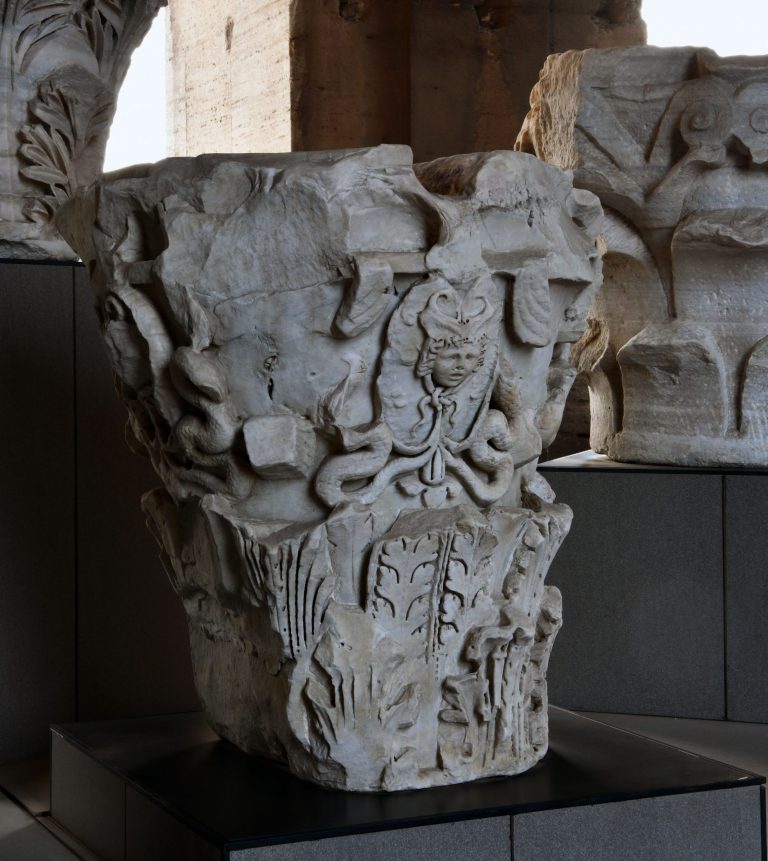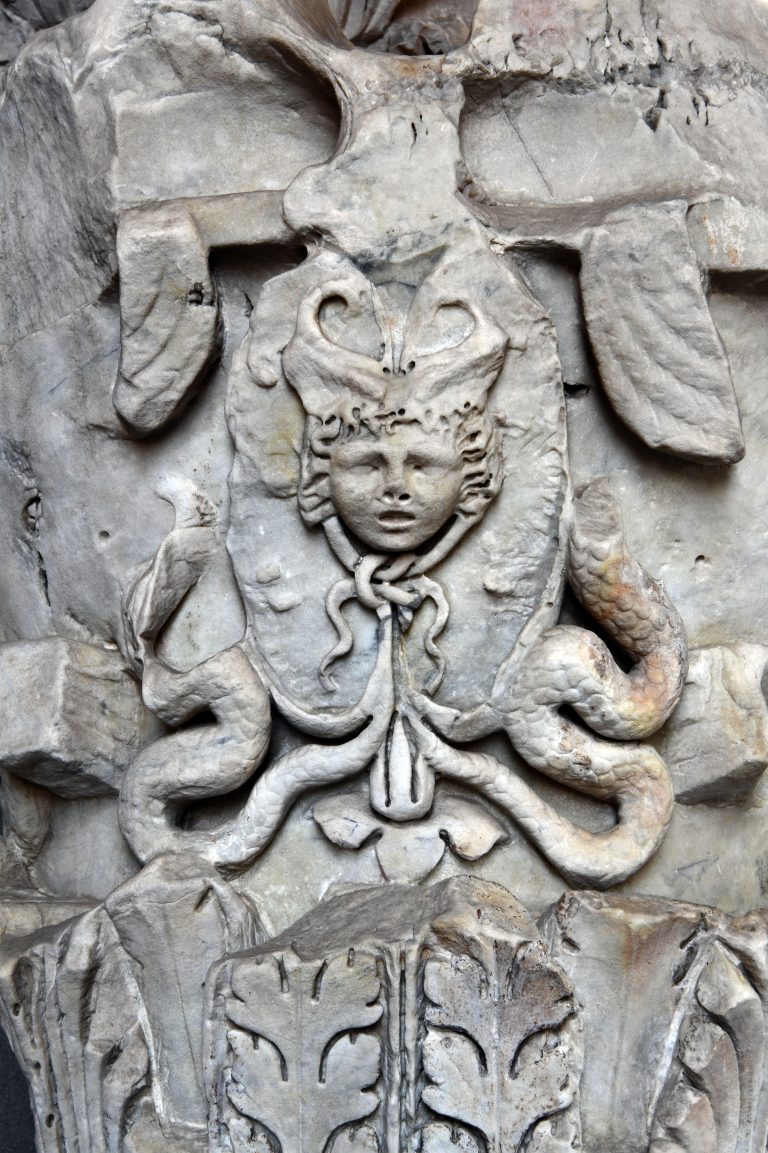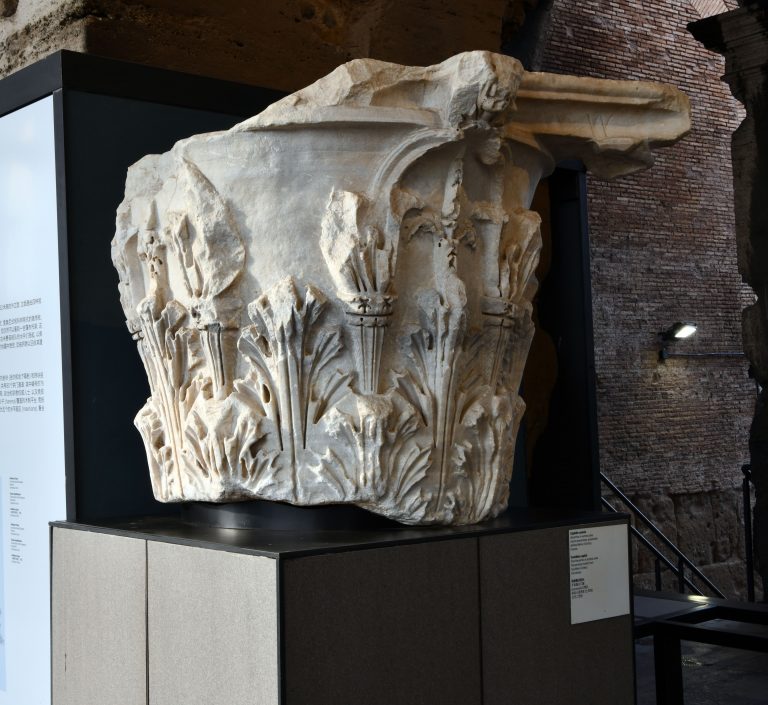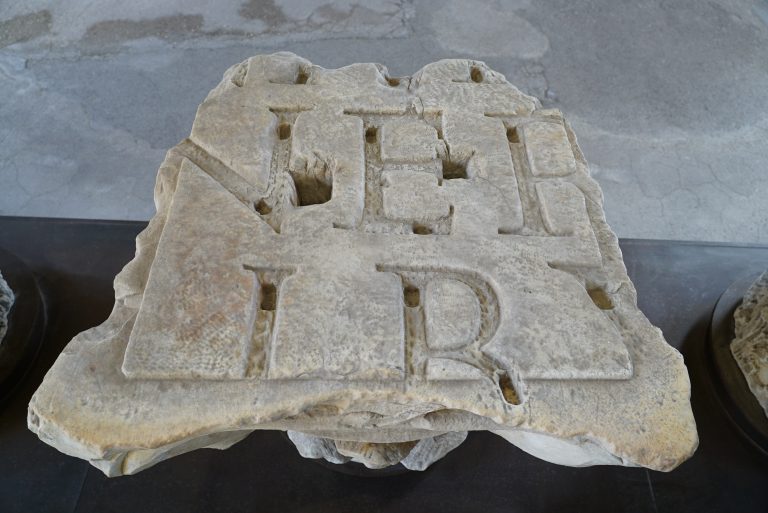Capitals
The Colosseum’s marble architectural decoration as we know it today comes mostly from the excavations carried out in the 19th century, in particular those conducted beneath the arena floor. Among the many pieces for visitors to admire are the capitals, all originating from the columned portico that once crowned the highest level of the amphitheater’s seating section (porticus in summa cavea).
Various decorative types are represented among the Colosseum’s collection of capitals, which date to a broad span of time stretching from the Flavian period to the mid-5th century AD: proof of the Amphitheater’s considerable lifespan and of the many restorations carried out following the numerous natural disasters to which it fell victim. The majority of the capitals are however dateable to the Severan period (first half 3rd century AD), linked to the reconstruction following the disastrous fire of 217 AD which forced the Amphitheater to close its doors for 5 years.
The capitals, in Carrara marble (Italy) and Proconnesian marble (current-day Turkey), were between 0.9 and 1.5 meters high and belong to the Corinthian (acanthus leaves) and composite orders (Ionic volutes with acanthus or smooth leaves).
Some pieces are of particularly fine stylistic quality and include figurative elements (e.g. the capital with the head of Gorgon-Medusa).
Portions of the cipollino marble and granite columns, originally c. 7 meters high, are visible along the ground floor walkway.








